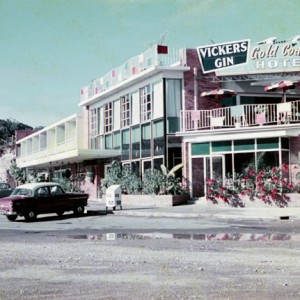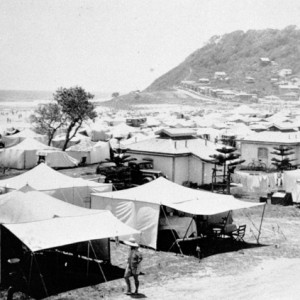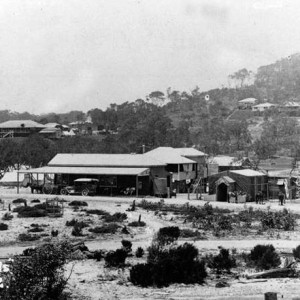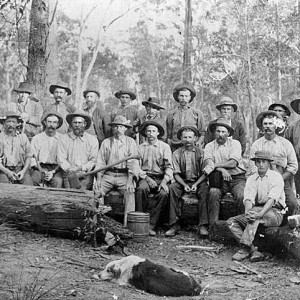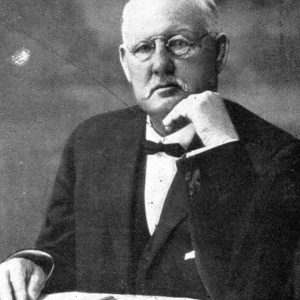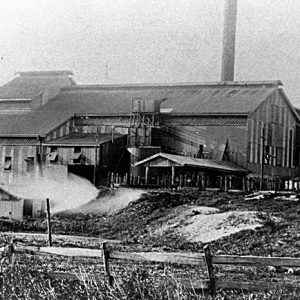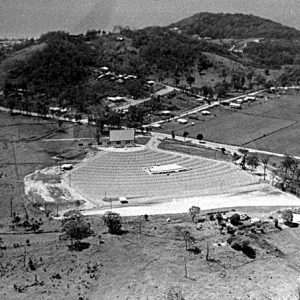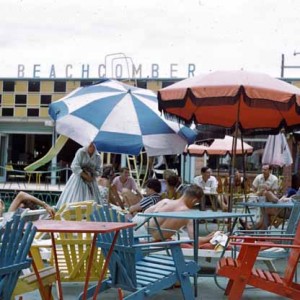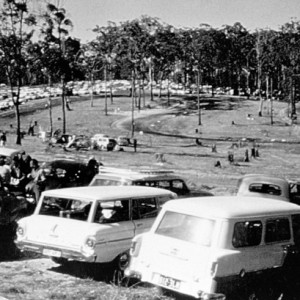
In 1840 the surveyor James Warner named a number of locations in the region and, twenty years later, in 1860 the surveyor Robert Dixon recorded the headlands near Tallebudgera Creek as Burly Head, possibly because of its massive appearance. The nearby creek was called the River Perry. Over the years Burly was changed to Burleigh and the Perry was renamed Tallebudgera Creek.
William Hanlon, whose childhood memories of the region went back to the 1870s, recalled that for the Koombumerri, Big Burleigh was known as Jellurgul and Little Burleigh was known as Jebbribillum or the Waddy of Jebreen. In another article, Hanlon referred to Jellurgul as meaning a sugar bag or bee’s nest.
Another identity who knew the area and its inhabitants well from the 1870s was Archibald Meston. He recalled fifty years later that the Yugambeh people called Big Burleigh Jayling (black) and Gumbelmoy (rock), after the volcanic black basalt rock of the headland.
- Gold Coast Hotel, Burleigh Heads, circa 1960. Photographer G A Black
- Burleigh Heads at the Christmas holidays, circa 1930s. Photographer Marriott family
- Justins Store and Tea rooms, Burleigh Heads, 1922. Photographer unknown
In 1871 the town reserve of Burleigh Heads was declared and a survey was undertaken by G. L. Pratten with the first auction of 65 town allotments taking place in July 1872. Later land sales occurred in 1877 and 1878.
Travel to the township was via rough roads or along the beaches from Southport. By 1882 the Nerang Divisional Board was working on improving the coastal track to what would eventually become Surfers Paradise and Frederick Fowler, a member of the Divisional Board, erected the first guest house at Burleigh Heads.
As transport options improved with daily coach services and the arrival of the railway to Boobinga (West Burleigh) the township grew. Although Burleigh Heads was still mostly popular as a tourist destination during Easter and Christmas holidays when hundreds of visitors would descend upon the small village, its permanent population slowly grew with families like the Justins making it their home and providing facilities and services to passing and visiting tourists.
It was during this period that J. G. Appel recommended that an area be set aside for recreation purposes. This reserve eventually became the Burleigh Heads National Park.
Sources of information and further reading
- Longhurst, Robert. The heart of paradise: the history of Burleigh Heads. Gold Coast: Gold Coast City Council, 1991.
- “Country News, by Mail.” The Queenslander (Brisbane, Qld. : 1866 – 1939), 20 Sep 1873, p. 10. Retrieved August 29, 2015, Web. http://nla.gov.au/nla.news-article27277719
- “Sale of an Estate.” The Daily Mail (Brisbane, Qld. : 1903 – 1926) 10 January 1920: 5. Web. 28 Oct 2016 http://nla.gov.au/nla.news-article215424504
- “FORTHCOMING SALES.” The Daily Mail (Brisbane, Qld. : 1903 – 1926) 21 December 1918: 5. Web. 28 Oct 2016 http://nla.gov.au/nla.news-article215463440
